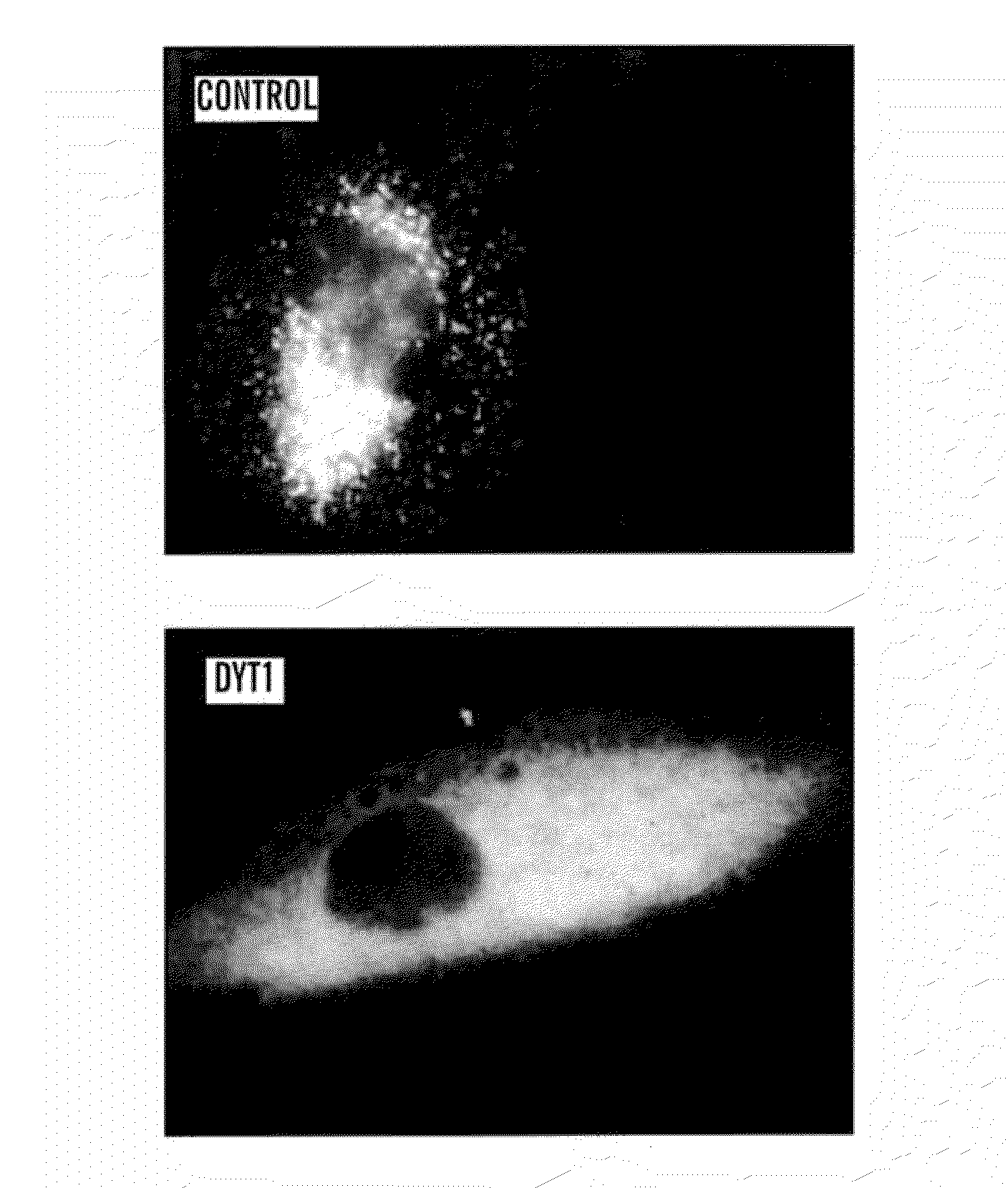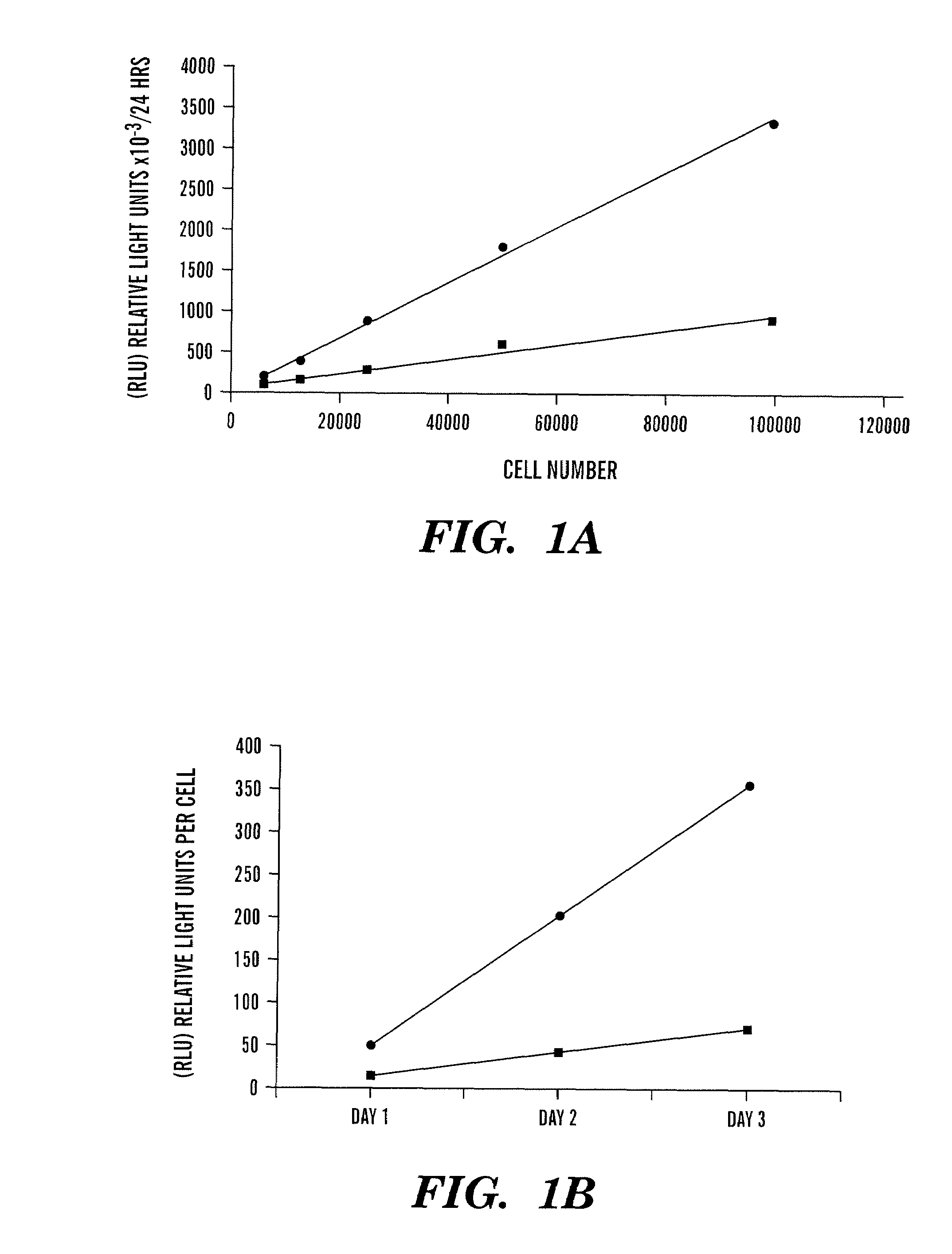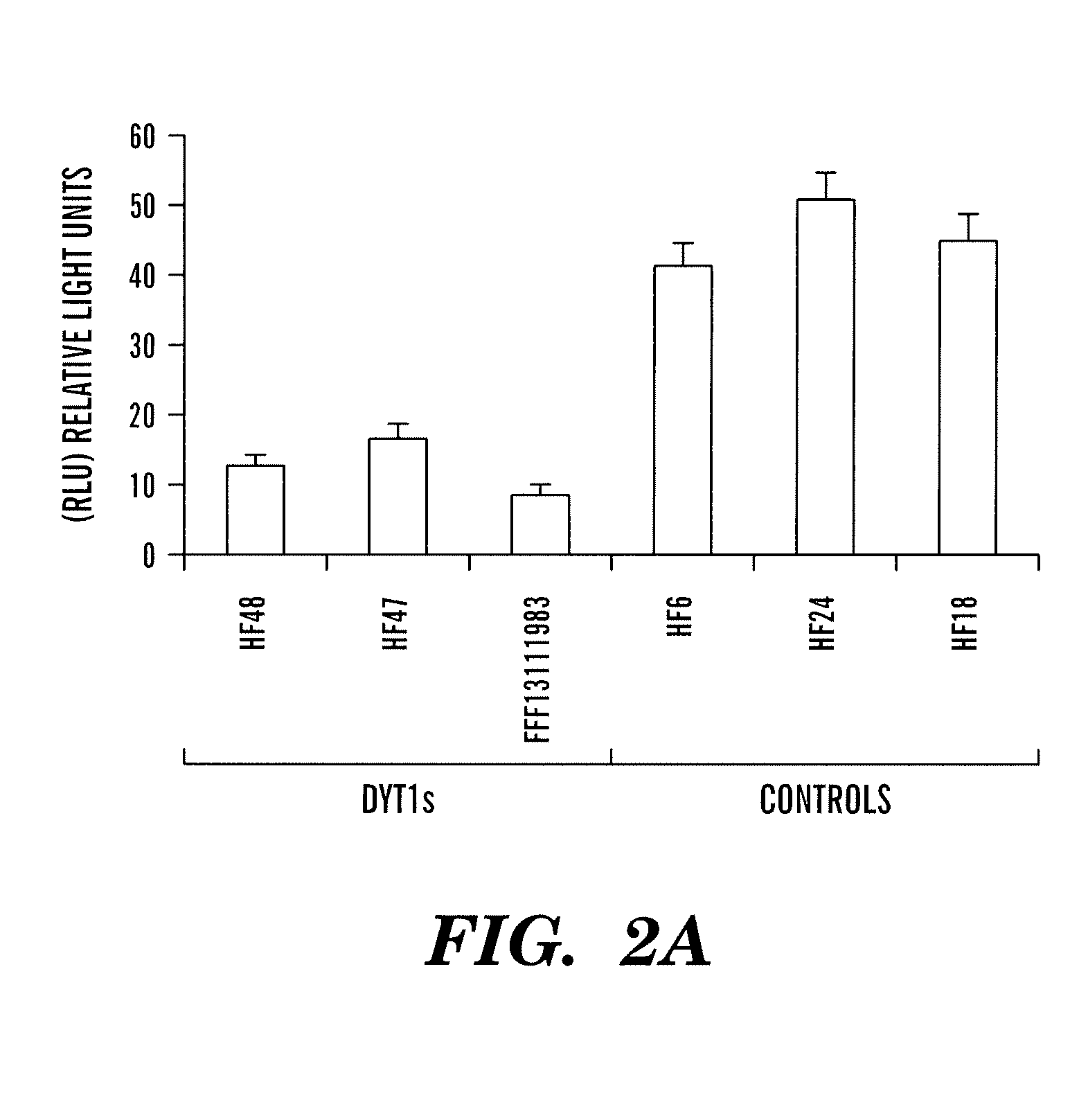Secreted Luciferase Fluorescent Protein Conjugate Nucleic Acid Construct and Uses Thereof
a technology of conjugate nucleic acid and secreted luciferase, which is applied in the field of biological system real-time analysis system, biological system material and method, can solve the problem of inability to quantitate the efficiency of secretion
- Summary
- Abstract
- Description
- Claims
- Application Information
AI Technical Summary
Benefits of technology
Problems solved by technology
Method used
Image
Examples
example 1
[0151]Monitor the transit of proteins through secretory pathway. Gluc-YFP fusion protein is used as reporter protein to monitor processing through the secretory pathway. As an illustrative example, the processing of Gluc-YFP was assessed in fibroblasts from normal patients and from patients affected with DYT1, an early onset torsion dystonia that is a dominantly inherited movement disorder characterized by sustained, involuntary muscle contractions and abnormal posturing (Fahn, 1988). A specific mutation underlies most cases of DYT1 dystonia—a GAG deletion in the coding region of the DYT1 gene encoding torsinA which results in a loss of a glutamic acid residue (ΔE302 / 303) in the carboxy terminal region of the protein (Ozelius et al., 1997; Kabakci et al., 2004).
[0152]Levels of Gluc activity were measured in cells and media, and the intracellular location was visualized using a Gluc-yellow fluorescent protein (Gluc-YFP) fusion protein following infection of cells with a lentivirus ve...
example 2
[0162]Monitor Promoter Activity. The Gluc assay can also be used to monitor promoter activity with high sensitivity and extended linear range spanning over 7 orders of magnitude. When the Gaussia luciferase cDNA which is codon optimized for mammalian gene expression (hGluc) is expressed under a promoter e.g. CMV, the activity of this promoter can be easily measured overtime by taking an aliquot of the supernatant, adding coelenterazine and measuring the photon counts using a luminometer (FIG. 7). Since the Gaussia luciferase is naturally secreted, the assay is performed on small samples of the conditioned media, with no need to lyse the cells, which makes it much faster and more convenient than assays with other luciferases such as firefly which is used in the SUPERLIGHT™ luciferase reporter gene assay (Bioassays, CA) where cell lysis is required. Since the cells are not disrupted, conditioned media can be sampled repeatedly for time course studies and cells can be used for further ...
example 3
[0163]Monitoring signaling pathway and transcriptional activation. The Gluc assay can also be used to monitor signaling pathways and transcriptional activation. The following promoters responsive to different transcription factors were cloned upstream of hGluc cDNA: the wild-type p53-activated fragment 1 (WAF1, 2.4 kb); early growth response factor (Egr-1); and five tandem repeats of the transcriptional factor nuclear factor-κB (5NFκB). Upon transfection with each of these constructs, the activity of each promoter could be monitored by taking an aliquot of the cell medium, adding coelenterazine and measuring photon counts using a luminometer (FIG. 8). Further, the NFκB response to ionizing-radiation and to radiomimetic drugs, such as bleomycin, and chemotherapeutic drugs, such as doxorubicin and etoposide could also be monitored overtime in real-time using hGluc under control of the 5NFκB (FIG. 9).
PUM
| Property | Measurement | Unit |
|---|---|---|
| temperature | aaaaa | aaaaa |
| volume | aaaaa | aaaaa |
| pH | aaaaa | aaaaa |
Abstract
Description
Claims
Application Information
 Login to View More
Login to View More - R&D
- Intellectual Property
- Life Sciences
- Materials
- Tech Scout
- Unparalleled Data Quality
- Higher Quality Content
- 60% Fewer Hallucinations
Browse by: Latest US Patents, China's latest patents, Technical Efficacy Thesaurus, Application Domain, Technology Topic, Popular Technical Reports.
© 2025 PatSnap. All rights reserved.Legal|Privacy policy|Modern Slavery Act Transparency Statement|Sitemap|About US| Contact US: help@patsnap.com



